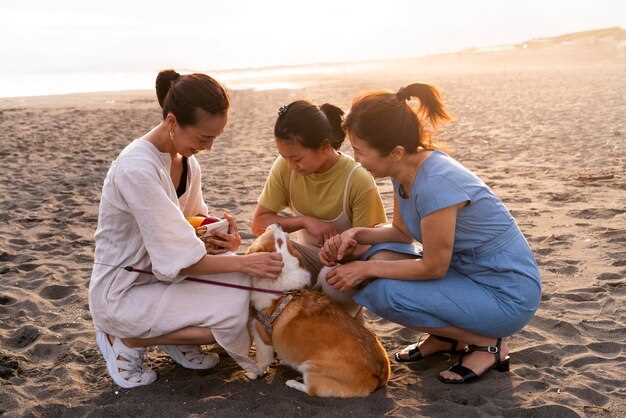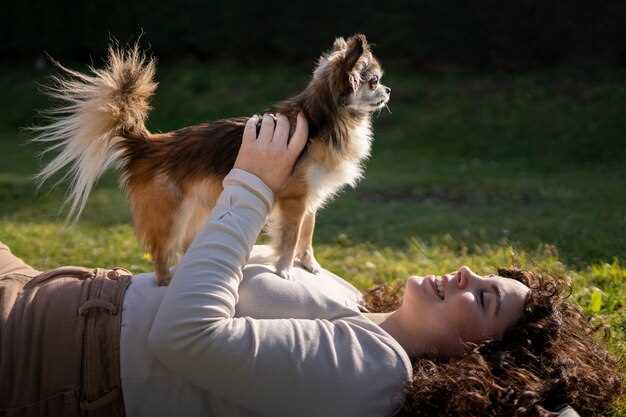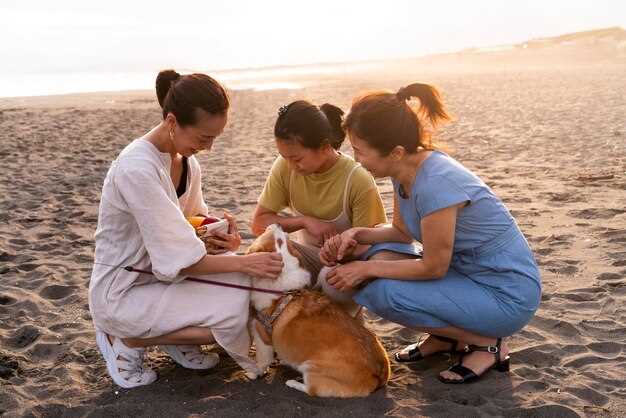Practical Tips for Coping with Pet Loss – Finding Comfort and Healing
Honor your pet’s memory by creating a dedicated space for reflection. Set up a small altar or shelf adorned with photos, toys, and mementos. This physical representation of your bond provides a comforting place to turn to during moments of sadness.
Engage in creative expression to process your feelings. Writing a letter to your pet detailing your favorite memories or drawing a picture can facilitate healing. Pouring your emotions onto paper or canvas helps articulate the profound bond you shared.
Talk about your grief with friends, family, or a support group. Sharing stories about your pet with others who understand can validate your feelings and create connections that ease the weight of loss. Discussing fond memories often brings laughter amidst the tears, fostering a sense of companionship in your sorrow.
Consider volunteering at a local shelter. Helping other animals in need can provide a sense of purpose and lessen feelings of emptiness. Channeling your love for your pet into caring for others encourages healing and allows you to honor their spirit.
Establish a routine that incorporates self-care. Exercise, meditation, or hobbies can distract from grief while nurturing your well-being. Prioritize activities that rejuvenate your emotional health, making space for both remembrance and recovery.
Finally, give yourself permission to grieve at your own pace. Understanding that healing is not linear allows you to process your feelings authentically. Celebrate the love you shared while recognizing that healing takes time, and that’s perfectly okay.
Understanding Your Grief Journey

Acknowledge that grief is a personal experience, taking different shapes for everyone. Accepting this can help you embrace your feelings without judgment. Allow yourself to express sadness, anger, or confusion as needed. Journaling can be a helpful outlet for your emotions. Write down your thoughts, memories, or even letters to your pet to validate your feelings.
Connect with others who understand your loss. Find a local support group or an online community. Sharing stories can provide comfort and remind you that you’re not alone. Discussing your pet’s quirks, behaviors, and shared experiences can facilitate healing.
Establish rituals that honor your pet’s memory. Consider creating a memory box filled with photos, toys, and mementos. Plan a small memorial or dedicate a specific spot in your home to celebrate their life. These activities can provide closure and a sense of connection.
Take care of your physical health. Exercise regularly, eat nutritious meals, and ensure you get enough sleep. Physical wellness can improve emotional resilience. Engage in activities that bring you joy, whether it’s spending time in nature or trying out a new hobby.
Be patient with yourself. Grief does not have a set timeline. Give yourself permission to heal at your own pace. If feelings of loss become overwhelming, consider speaking with a mental health professional. They can offer support and coping strategies tailored to your needs.
| Grief Emotion | Suggested Action |
|---|---|
| Sadness | Write in a journal or talk with friends. |
| Anger | Engage in physical activity to release tension. |
| Loneliness | Join a support group or connect with others online. |
| Confusion | Practice mindfulness or meditation to find clarity. |
| Guilt | Reflect on your pet’s happiness and your shared memories. |
Recognize that healing is a journey of ups and downs. Celebrate small victories as you progress. Each step toward healing is meaningful and valid. Cherish the love you shared with your pet, and let it guide your path forward.
Creating a Memorial for Your Pet

Design a memorial that reflects your pet’s personality and your shared memories. Consider a dedicated spot in your garden or home where you can place a beautiful marker, such as a stone or plaque engraved with their name and dates. Add personal touches like their favorite toys or a framed photo.
Plant a Living Tribute
Choosing a tree, shrub, or flowering plant to commemorate your pet can create a living tribute. Selecting a species that thrives in your environment ensures it remains vibrant and serves as a reminder of the joy your pet brought into your life. Each season will bring memories associated with the colors and scents of the flowers or leaves.
Create a Memory Box
Gather your pet’s belongings, including toys, collar, and any special items that hold meaning. Store them in a decorative box to create a memory chest. Include a letter expressing your feelings and cherished moments. This box becomes a cherished keepsake to reflect on and find comfort in over the years.
Include friends or family in your memorial activities. Hosting a small gathering where you share stories and memories provides support and strengthens bonds. Everyone can share their thoughts and experiences, creating a shared space for healing and remembrance.
Remember, a memorial can evolve. You might add photos or new mementos over time, allowing your tribute to grow alongside your memories. The act of remembrance brings comfort and can help ease the pain of loss.
Practicing Self-Care During Your Loss

Engage in physical activity to alleviate emotional pain. Take a walk in nature, try yoga, or join a local fitness class. Movement releases endorphins, improving your mood while helping you process feelings.
Establish a Routine
Creating a daily routine can bring structure and stability. Include activities you enjoy, such as reading, cooking, or gardening. Routines help ground you, providing a sense of normalcy during turbulent times.
Connect with Others
Reach out to friends and family for support. Share your feelings and memories of your pet. Consider joining a pet loss support group, either online or in-person. Connecting with others who understand your grief can be uplifting and validating.
Practice mindfulness through meditation or simple breathing exercises. These techniques can help you stay present, easing feelings of anxiety or sadness. Allocate a few minutes each day to focus on your breath and center yourself.
Engage in creative outlets like journaling or arts and crafts. Expressing your emotions through writing or creating can be therapeutic, allowing you to process your grief in a healthy way.
Lastly, prioritize your nutrition and sleep. A balanced diet supports emotional well-being, while quality sleep enhances your ability to cope with stress. Simple changes, like integrating more fruits and vegetables into your meals and establishing a bedtime routine, can have a significant impact on your healing process.
Finding Support from Friends and Family
Reach out to close friends and family members who understand your bond with your pet. Share your feelings openly; this often invites empathy and support. You might find that they have similar experiences, allowing for a comforting exchange of memories.
Organize Supportive Gatherings
Consider organizing a small gathering with friends and family to share memories of your pet. This can be a simple get-together at home or a more informal picnic in the park. Sharing stories allows everyone to express their feelings and celebrate your pet’s life together.
- Choose a cozy setting to foster open communication.
- Encourage attendees to bring photos or mementos of your pet.
- Consider incorporating activities like creating a scrapbook or planting a tree in memory of your pet.
Utilize Online Communities
If local support feels limited, explore online forums or social media groups focused on pet loss. These virtual spaces often connect individuals experiencing similar grief. Post your story and engage with others who can relate, which may help you process your feelings more effectively.
- Join dedicated pet loss support groups.
- Participate in discussions where you can ask questions and share experiences.
- Find resources such as articles or guides shared by members.
Lean on your support network. Their understanding can ease your sorrow and provide comfort during this difficult time.
Joining a Pet Loss Support Group
Consider participating in a pet loss support group to connect with others who understand your grief. Look for local gatherings through veterinary clinics, animal shelters, or community centers. Many organizations also host online groups, providing access from the comfort of your home. Engaging with these communities can help validate your feelings and offer comfort during difficult times.
Finding the Right Group
Research different options to determine which group resonates with you. Some focus on sharing personal stories, while others may offer structured discussions or activities. Check for group schedules and meeting formats to find one that fits your needs. Don’t hesitate to reach out to organizers; they often welcome questions about their approach and the support they provide.
Participating Thoughtfully
As you attend sessions, share your feelings openly when you feel ready. Listening to others can also be healing; their experiences may mirror your own and bring a sense of companionship. If you find it difficult to speak at first, that’s okay. Take your time. Building connections takes patience, and every member contributes uniquely to the group dynamic.
Expressing Your Emotions Through Writing
Writing serves as a powerful outlet for processing feelings after losing a pet. Begin by setting aside a quiet time for yourself. This allows you to focus without distractions. Grab a notebook or open a digital document and let your thoughts flow freely. Don’t worry about grammar or structure; just express yourself.
Journaling Your Grief
Journaling can provide a structured way to articulate your pain and memories. Start with a simple prompt like, “What do I miss most about my pet?” or “Describe a favorite memory.” Allow yourself to explore the emotions that arise. Writing regularly can create a safe space for processing feelings and can help in understanding the depth of your loss.
Writing Letters to Your Pet
Writing letters to your pet can be a healing exercise. Express your feelings as if your pet were still with you. Share stories, apologies, or things you never got to say. These letters can be cathartic and may help in finding closure. Consider reading them aloud during moments of reflection; this can enhance the emotional release.
Engaging in Activities That Bring You Joy
Identify activities that previously brought you happiness and make a plan to incorporate them into your routine. This could be something simple, like reading your favorite book, painting, or cooking a beloved recipe.
- Get Active: Engage in physical activities such as walking, cycling, or yoga. Movement releases endorphins, lifting your mood and helping you feel more connected to your surroundings.
- Join a Class: Explore local classes that interest you, such as pottery, photography, or dancing. These settings allow you to meet new people and remind you of the joy found in creativity and learning.
- Volunteer: Spend time at a local shelter or community center. Helping others can provide a sense of purpose and connection, creating positive feelings that alleviate grief.
- Reconnect with Nature: Spend time outdoors. Visit parks or go hiking. Nature has a restorative effect, and being outside can improve your mood significantly.
- Start a New Hobby: Try your hand at something completely new like gardening, writing, or crafting. Fresh experiences can spark joy and foster a sense of achievement.
Set small, achievable goals for each activity. Celebrate your successes, no matter how minor they may seem. These moments of joy can gradually help alleviate feelings of sadness.
Incorporate mindfulness practices such as meditation or journaling into your activities. They can enhance your enjoyment and help you process emotions related to your pet loss.
By engaging in enjoyable activities, you honor your pet’s memory while creating new, positive experiences that bring comfort and healing.
Seeking Professional Counseling for Grief
Consider reaching out to a licensed therapist who specializes in grief counseling. Engaging with a professional provides a safe space to express your feelings without judgment. Look for therapists certified in grief support or those with experience in pet loss specifically. This specialized knowledge allows them to address unique grief experiences related to losing a pet.
During therapy sessions, you can share your thoughts, emotions, and memories associated with your pet. Talking through these feelings often helps to alleviate the burden of grief. Therapists can guide you through coping strategies tailored to your situation, providing tools to manage overwhelming emotions.
Support groups can also be a valuable resource. Check for local or online groups where individuals share similar experiences. These groups foster community and connection, reminding you that you are not alone in your grief. Hearing others’ stories may resonate and provide comfort as you navigate your feelings.
Consider journaling as an adjunct to counseling. Writing can clarify thoughts and emotions, serving as an additional outlet for expression. Share your experiences, write letters to your pet, or reflect on cherished memories. This practice can complement the insights gained during therapy.
Keep in mind that grief is a personal process; it’s okay to seek help when needed. Professional counseling can offer the support necessary to understand your feelings and gradually find a path towards healing. Take that step when you feel ready–your emotional well-being is a priority.
Establishing New Routines Post-Loss
Create a consistent daily schedule. This can be comforting in times of grief. Set specific times for waking up, meals, and bedtime. Routine helps fill the void left by your pet and brings structure to your day.
Morning Rituals
- Start your day with a simple morning routine. Make a cup of tea or coffee and take a few minutes for mindfulness.
- Consider a brief walk outside, even if it’s just around the block. Fresh air can uplift your spirits.
- Engage in gentle stretching or yoga to energize your mind and body.
Afternoon Activities
- Incorporate a new hobby or revisit an old one. Discovering new interests can be fulfilling.
- Schedule time for connecting with friends or family. A supportive chat can be healing.
- Volunteer at a local animal shelter. This can help channel your love for animals into something positive.
Evenings can be a time for reflection. Create an ambiance with soft lighting or calming music, and journal about your feelings. This helps process the loss and honor your pet’s memory.
Adjust your routine gradually, allowing yourself to heal. Focus on self-care and remain open to new experiences as you move forward.
Celebrating Your Pet’s Life with Traditions
Create a memorial space in your home. Dedicate a small area with your pet’s photo, favorite toys, and a candle. This spot becomes a constant reminder of the joy your pet brought you.
Develop a personalized ritual. Every year on your pet’s birthday or adoption anniversary, cook their favorite treat. Share stories with family or friends about the memories you made together. This tradition keeps their spirit alive in your heart.
Consider planting a tree or a flower in your pet’s memory. Choose a spot in your garden where you can visit regularly. This living tribute will grow and flourish, symbolizing the love and joy your pet provided.
Hold a remembrance ceremony. Invite close friends or family to share in honoring your pet’s life. Light candles, play their favorite music, or read poems that resonate with your feelings. This collective remembrance strengthens connections and provides comfort.
Create a scrapbook or memory box. Collect photos, mementos, and written memories. Revisit this collection when you need to feel close to your pet, and allow the memories to bring you smiles.
| Tradition | Description |
|---|---|
| Memorial Space | A dedicated area with photos and items that remind you of your pet. |
| Personalized Ritual | Cooking a favorite treat on significant dates to celebrate their life. |
| Planting a Tree | Planting a living tribute that you can visit regularly. |
| Remembrance Ceremony | A gathering to honor your pet, share stories, and provide collective support. |
| Scrapbook/Memory Box | A collection of memories to revisit and cherish your time together. |
Engage in activities that your pet enjoyed. Whether it’s hiking, playing fetch, or visiting local parks, keep their spirit alive by continuing the experiences that brought joy to both of you.
Share your experiences on social media or pet loss support groups. Discussing your feelings and traditions can provide comfort to others facing similar challenges, creating a supportive community.
Helping Children Cope with Pet Loss
Encourage open conversations about feelings. Let children express sadness, anger, or confusion. Create a safe space where they can talk about their emotions without fear of being judged. Ask them questions about their feelings and listen attentively. For instance, inquire what they miss most about their pet or how the loss affects them.
Memory Projects
Engage children in creating a memorial for their pet. Crafting a scrapbook filled with photographs, drawings, or stories can help them treasure happy memories. They might enjoy writing a letter to their pet, expressing their love and sharing fond moments. This can provide a meaningful way to explore and process their emotions.
Routine and Distraction
Maintain a routine to provide stability during this difficult time. Incorporate activities that the child enjoys, such as sports, art, or reading. Keeping busy helps redirect their thoughts and provides comfort. Scheduling regular family activities can strengthen connections and create opportunities for further discussion about their feelings.
Video:
Pet Loss Syndrome | How to Cope with The Loss of A Pet
Pet Loss Syndrome | How to Cope with The Loss of A Pet by BEMYPET 432,110 views 2 years ago 3 minutes, 47 seconds
Q&A:
What are some common feelings people experience after losing a pet?
After losing a pet, many individuals go through a complex mix of emotions. Common feelings include grief, sadness, and a sense of emptiness. People might also experience anger, guilt, or confusion. It’s not unusual to feel lonely or isolated, as pets often play a significant role in our daily lives. Recognizing these emotions is an important step in the healing process.
How can I honor my pet’s memory after their passing?
Honoring a pet’s memory can take many forms. One way is to create a memorial space in your home with photos, their favorite toys, or a plant in their honor. Some people choose to hold a small ceremony or share memories with friends and family. Additionally, you might consider making a donation to an animal charity or adopting another pet when you feel ready. Collecting stories and photos can also help celebrate the joy your pet brought into your life.
What strategies can help me cope with the loss of my pet?
Coping with pet loss can be challenging, but there are several strategies that can provide comfort. Talking to friends or family about your feelings can help alleviate loneliness. Joining a pet loss support group, either in person or online, can connect you with others who understand your experience. Engaging in self-care activities, like taking walks, journaling, or practicing mindfulness, can also help you process your emotions. It’s important to give yourself time and permission to grieve.
How long does it typically take to heal from the loss of a pet?
The healing process after losing a pet varies greatly from person to person. Some may begin to feel better after a few weeks, while others might take months or even longer to come to terms with their grief. Factors that can influence the healing timeline include the bond you shared with your pet, your coping mechanisms, and your support network. It’s crucial to be patient with yourself and recognize that grieving is a personal and unique experience.
Are there resources available for people struggling with pet loss?
Yes, there are many resources for individuals dealing with the loss of a pet. Books and articles on pet grief can provide valuable insights and comfort. Online forums and support groups specifically for pet loss exist where you can share your feelings and hear from others in similar situations. Some veterinarians and animal hospitals offer grief counseling services as well. Additionally, local community centers or therapy services may have programs focused on pet loss support.
